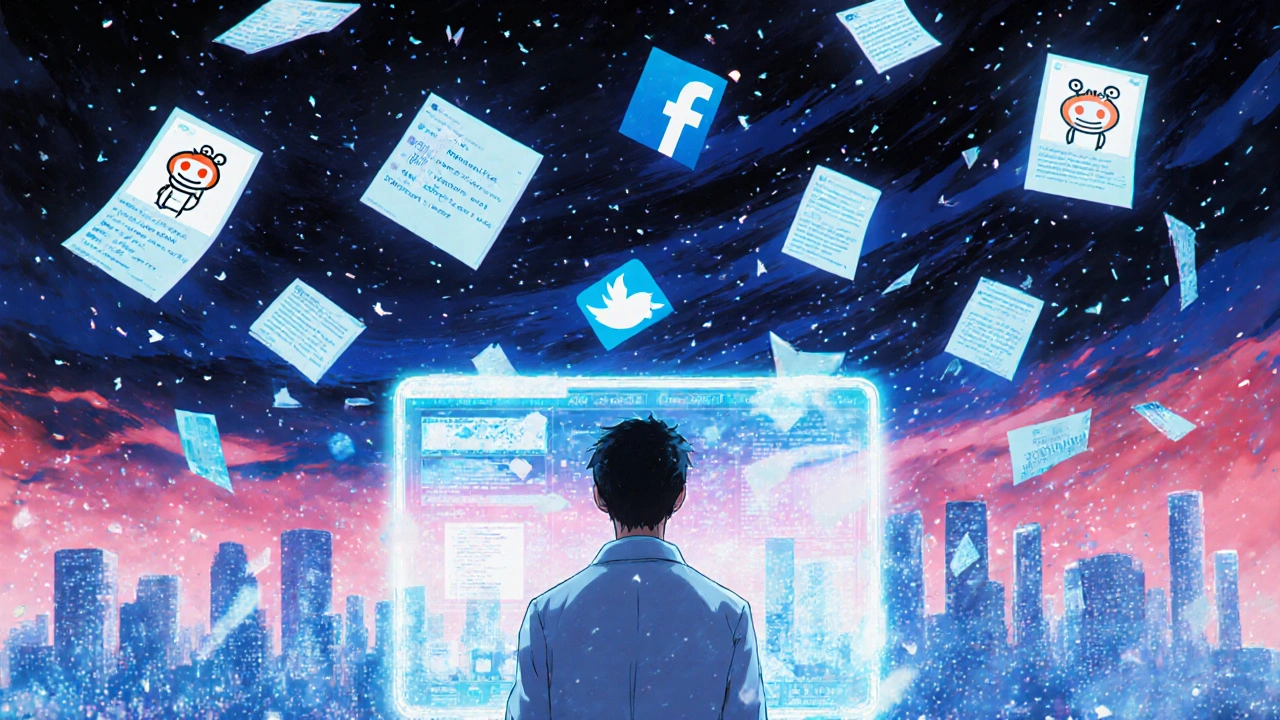
Health October 30, 2025
Using Social Media for Pharmacovigilance: Real-World Opportunities and Hidden Risks
Pharmacovigilance Signal Calculator
This tool demonstrates how social media monitoring's effectiveness depends on AI accuracy and prevalence of actual adverse drug reactions (ADRs). Based on article data showing 85% AI accuracy but 68% false positive rates in practice.
Signal Reliability Analysis
With your settings:
- Positive Predictive Value: N/A
- True Signal Rate: N/A
- False Alarm Rate: N/A
Every year, millions of people share their health experiences online - complaints about dizziness after taking a new pill, rashes from a generic medication, or unexpected fatigue after switching brands. Most of these posts are never seen by doctors. But increasingly, they’re being read by pharmacovigilance teams at pharmaceutical companies. Social media pharmacovigilance is no longer science fiction. It’s a growing, high-stakes practice that’s changing how drug safety is monitored - with real results, but also serious blind spots.
Why Social Media Matters for Drug Safety
Traditional systems for tracking adverse drug reactions (ADRs) rely on doctors and patients filling out forms. But studies show these systems catch only 5-10% of actual reactions. That means for every 100 people who have a bad reaction to a drug, 90-95 go unreported through official channels. Social media fills that gap. People don’t wait for a clinic visit. They post on Reddit, Twitter, or Facebook within hours - sometimes minutes - of noticing something wrong. In 2024, 5.17 billion people used social media worldwide. That’s over 60% of the global population, spending more than two hours a day scrolling. For drug safety teams, that’s a massive, real-time stream of unfiltered patient data. One case from Venus Remedies showed how social media caught a rare skin reaction to a new antihistamine. The cluster of posts led to a label update 112 days faster than traditional reporting would have allowed. That’s not just efficiency - it’s life-saving speed.How It Actually Works
This isn’t just someone reading tweets. It’s a complex system built on AI and natural language processing. Companies use tools that scan millions of posts daily, looking for patterns. Named Entity Recognition (NER) pulls out key details: drug names, symptoms, dosages. Topic Modeling finds unexpected connections - like a spike in mentions of “brain fog” linked to a new antidepressant, even if users didn’t mention the drug name directly. AI systems now handle about 15,000 posts per hour. They’re trained to spot medical slang - “I felt like I was drowning” for respiratory distress, or “my skin’s on fire” for severe rashes. These tools are 85% accurate at flagging real adverse events. But here’s the catch: 68% of those flagged reports turn out to be false alarms. Someone’s joking. Someone misremembered their medication. Someone mixed up two drugs. That’s why every flagged post goes through at least three rounds of human review.The Big Problems Nobody Talks About
It’s easy to get excited about the potential. But the data is messy - and often useless. First, no one knows who’s posting. Is this a real patient? A bot? A marketer? Without verified identities, you can’t confirm if the reaction happened, or even if the person took the drug at all. In 92% of social media reports, there’s no medical history. No lab results. No timeline. No way to tell if the symptom was caused by the drug, another medication, or a cold. Dosage info is wrong in 87% of cases. People say “I took two pills” when they meant “I took one pill twice.” Or they don’t mention the brand, so you can’t tell if it’s the generic or the original. And in 41% of cases, the same report gets posted multiple times across platforms - creating fake “clusters” that look like outbreaks but are just duplicates. Worse, social media favors certain drugs. If a medication has millions of users - like metformin or lisinopril - you’ll get enough signals to spot trends. But for rare drugs, used by under 10,000 people a year, the noise drowns out the signal. The FDA found a 97% false positive rate for these drugs. That means for every real adverse event detected, 24 reports are just noise.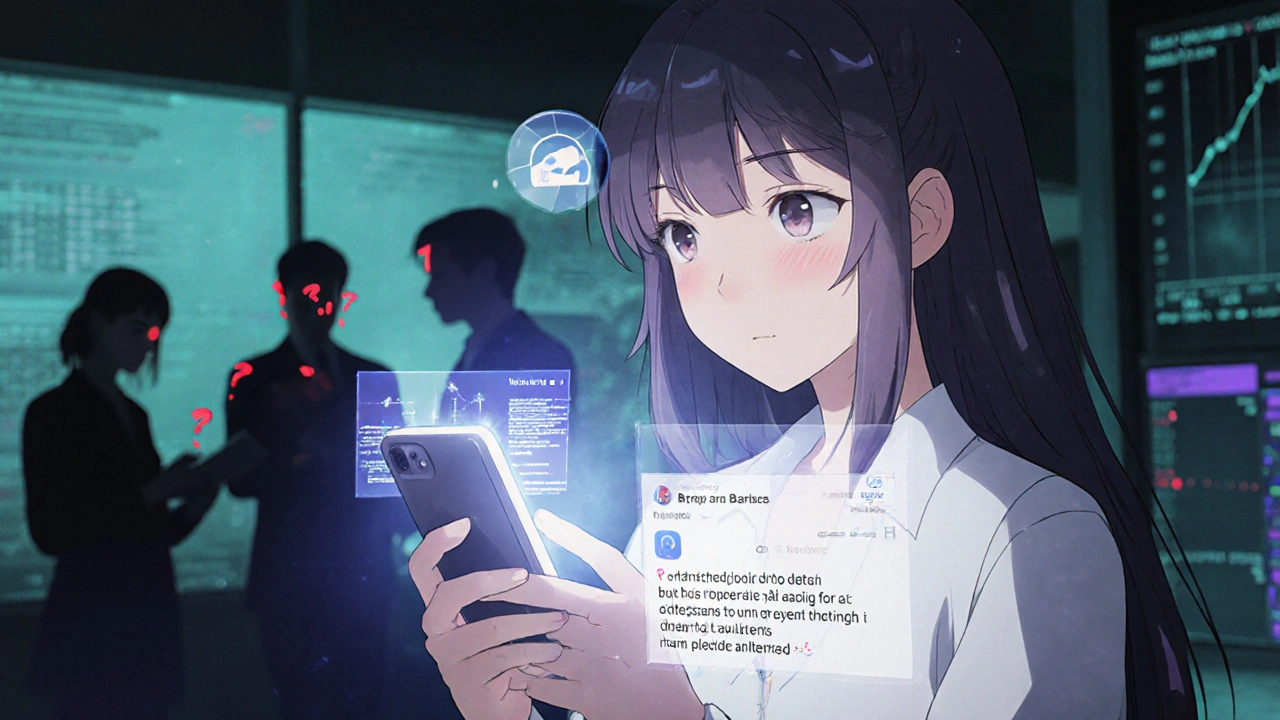
Who’s Left Out?
Social media isn’t everyone. It’s younger, wealthier, more connected people. Older adults, low-income communities, and non-English speakers are underrepresented. In 63% of pharmaceutical companies, processing non-English posts remains a major challenge. That means the data you’re using to make safety decisions might be skewed toward urban, tech-savvy populations - leaving others at risk. And there’s the privacy issue. Patients share deeply personal health details publicly - sometimes without realizing it’s being harvested. A woman posts about her suicidal thoughts after starting a new antidepressant. Her post gets picked up by a monitoring system. She never gave consent. She doesn’t know her data is now in a corporate database. That’s not just a legal gray area - it’s an ethical minefield.Who’s Using It - and Getting Results
Seventy-eight percent of major pharmaceutical companies now use social media monitoring. And it’s not just for show. Forty-three percent have detected at least one real safety signal through it in the past two years. One Reddit user, MedSafetyNurse88, shared how Twitter conversations revealed an interaction between a new antidepressant and St. John’s Wort - something clinical trials missed. That led to a warning update in the prescribing information. Another company used Facebook groups to track patient-reported memory loss linked to a cholesterol drug, prompting a reevaluation of its use in elderly patients. The FDA and EMA aren’t ignoring this. In 2022, the FDA issued formal guidance saying companies must validate social media data before using it in safety assessments. In 2024, the EMA made it mandatory to include social media monitoring strategies in periodic safety reports. The FDA is even running a pilot with six companies to improve AI accuracy and reduce false positives below 15%.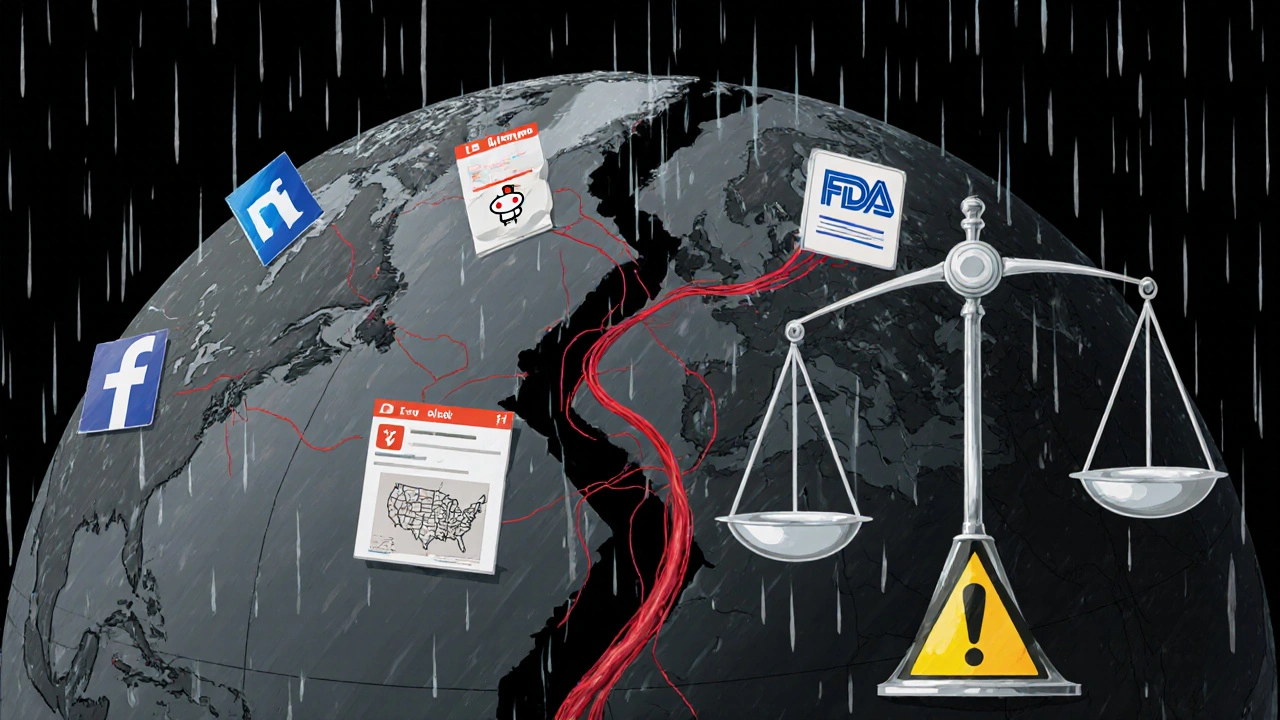
The Future: AI, Regulation, and Integration
The future isn’t about replacing traditional reporting - it’s about blending it. Social media data won’t be the sole source of truth. But it can be the early warning system. AI will get better at filtering noise, recognizing dialects, and linking posts to verified medical records (with consent). Platforms like Facebook and IMS Health have already improved de-duplication to 89%. Training is a big hurdle. Pharmacovigilance teams need an average of 87 hours of specialized training just to use these tools properly. That’s not just technical skill - it’s learning how to interpret slang, spot scams, and understand cultural context. A post saying “this drug made me feel like I’m turning into a zombie” might mean sedation. Or it might mean depression. Or it might mean the person was just tired. The market is growing fast. The social media pharmacovigilance segment is projected to hit $892 million by 2028. But adoption varies. Europe leads with 63% of companies using it. North America is at 48%. Asia-Pacific lags at 29%, mostly due to stricter privacy laws and less digital infrastructure.Is It Worth It?
Yes - but only if you treat it right. Social media pharmacovigilance isn’t a magic bullet. It’s a tool. A powerful one, but one that demands discipline, validation, and ethics. Used poorly, it leads to false alarms, wasted resources, and unnecessary panic. Used well, it catches dangers that clinical trials missed, gives voice to patients ignored by traditional systems, and saves lives by acting faster. The key is balance. Don’t trust the algorithm. Don’t ignore the data. Validate everything. Document everything. And always ask: who’s missing from this conversation?Pharmacovigilance has always been about listening. Now, the conversation is happening online. The question isn’t whether to listen - it’s how to listen well.
Can social media posts be used as official adverse drug reaction reports?
No. Social media posts cannot replace formal adverse drug reaction reports submitted to regulatory agencies. While they can flag potential safety signals, they lack verified patient identity, medical history, dosage details, and clinical context. Regulatory bodies like the FDA and EMA require structured reports with confirmed data before taking formal action. Social media data is used as a supplementary source to trigger further investigation - not as final evidence.
How accurate are AI tools in detecting real adverse events from social media?
Current AI systems are about 85% accurate at identifying posts that mention possible adverse drug reactions. But accuracy doesn’t mean reliability. Of all posts flagged as potential adverse events, 68% turn out to be false positives - caused by humor, misinformation, misremembered medication names, or unrelated symptoms. Even with AI, human review is essential. The goal isn’t 100% automation - it’s using AI to reduce the workload so experts can focus on the most credible signals.
Why do some drugs show more social media signals than others?
Drugs with large user bases - like metformin, ibuprofen, or sertraline - generate far more social media chatter simply because more people are taking them. That makes it easier to spot patterns. But for rare drugs, used by fewer than 10,000 people annually, the signal-to-noise ratio becomes unmanageable. The FDA found false positive rates of 97% for these drugs. Social media works best for common medications where volume creates clarity - not for niche or newly approved drugs with low adoption.
Is it ethical to monitor patients’ social media without their consent?
This is one of the biggest ethical debates in modern pharmacovigilance. Patients often share health details publicly, not realizing their posts could be harvested by pharmaceutical companies. While some argue that the public good of detecting drug dangers justifies this, others warn it violates privacy and informed consent. Experts like Dr. Elena Rodriguez emphasize that using this data without consent creates bias - it favors those who are digitally literate and online, while excluding vulnerable groups. Ethical use requires transparency, data minimization, and strict protocols to avoid exploiting public posts.
What’s the biggest barrier to using social media for pharmacovigilance?
The biggest barrier isn’t technology - it’s data quality. Without verified patient identities, accurate dosages, medical history, or clinical context, social media data is incomplete and often misleading. Even with advanced AI, 92% of posts lack critical medical details. This forces teams to spend hours manually verifying each report. Until there’s a way to link social media posts to verified health records (with patient consent), the value of this data will remain limited to early warning signals - not definitive evidence.
How long does it take to train staff to use social media pharmacovigilance tools?
On average, pharmacovigilance staff need 87 hours of specialized training to use these systems effectively. Training isn’t just about learning software. It includes understanding medical slang, recognizing cultural differences in symptom description, spotting misinformation, distinguishing between real reactions and coincidences, and interpreting ambiguous language. Many teams also need training in privacy regulations across different countries, since social media data crosses borders. Without this depth of training, false positives rise and real signals get missed.
Write a comment
Items marked with * are required.

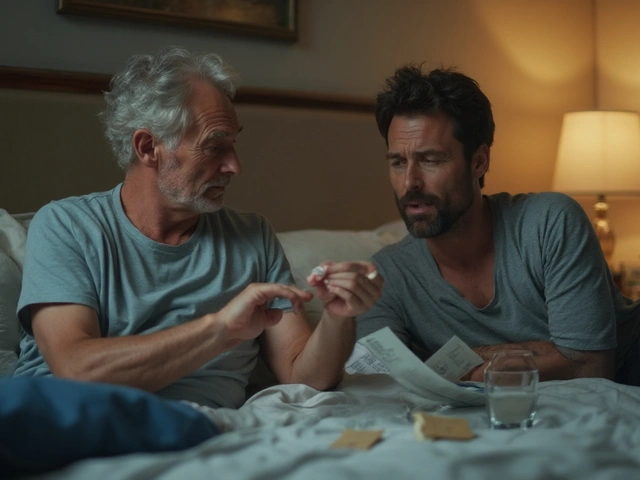
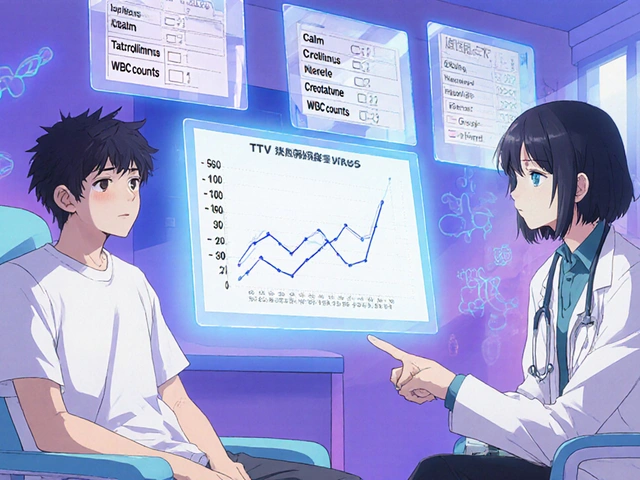
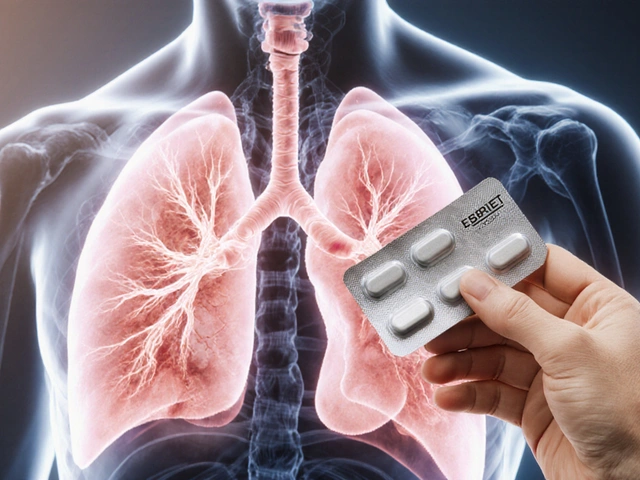
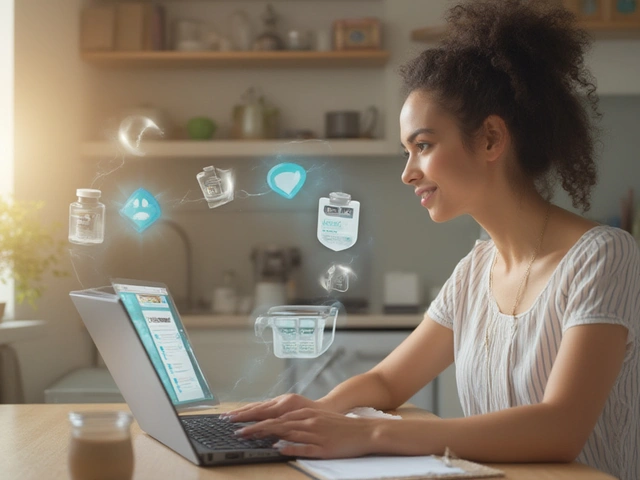

11 Comments
Matt Gonzales November 1, 2025 AT 15:28
This is actually kind of beautiful in a weird way - like, people are out here sharing their real, messy health stories, and someone’s actually listening. 🙌 No more waiting months for a doctor to notice something’s off. I’ve seen friends post about weird side effects and get answers within hours. It’s not perfect, but it’s a start. Let’s not throw the baby out with the bathwater. 🌱
Angie Romera November 2, 2025 AT 16:25
so like… if i post ‘this pill made me feel like a zombie but also kinda high’ is that a safety signal or just me being a dumbass? 🤡
Daniel Taibleson November 2, 2025 AT 16:55
While the potential of social media in pharmacovigilance is undeniable, we must acknowledge the structural limitations. The absence of verified clinical data renders most reports unactionable in isolation. AI can identify patterns, but without patient identity, dosage accuracy, or temporal correlation, we risk generating noise that distracts from legitimate signals. The FDA’s guidance on validation is not bureaucratic red tape - it’s the minimum standard for ethical, effective surveillance. We need better integration with EHRs, not just more scraping.
Jamie Gassman November 4, 2025 AT 03:01
Let me get this straight - corporations are harvesting my raw, unfiltered medical trauma from Reddit because I said ‘my brain feels like mush’ after taking Zoloft… and they call it ‘innovation’? Meanwhile, my doctor won’t even return my voicemail. This isn’t pharmacovigilance - it’s digital surveillance capitalism dressed in lab coats. They’re not saving lives - they’re mining our vulnerability for regulatory cover. And don’t even get me started on how they ignore non-English posts from elderly immigrants who can’t afford to be ‘tech-savvy.’ This is eugenics with algorithms.
Julisa Theodore November 4, 2025 AT 05:29
so like… what if the real problem isn’t the data… but the fact that we think a machine can understand what ‘i feel like i’m turning into a ghost’ means? 🤔 maybe the real signal is that we’ve stopped listening to humans. we’ve outsourced empathy to AI. and now we’re surprised when it mistakes sarcasm for a seizure? maybe we need less code… and more coffee with actual patients. not bots. not dashboards. just people. talking. slowly.
anil kharat November 5, 2025 AT 14:48
Bro… I’m from India. We don’t have the luxury of fancy AI tools. We have WhatsApp groups where aunties share ‘this tablet made my leg fall off’ and someone replies ‘nah, that’s just the heat.’ We don’t even know if the medicine is real. But guess what? We still survive. Social media? It’s not the future - it’s just the latest version of the same old gossip. And yes, some of it’s wrong. But some of it’s real. And if you ignore it because it’s ‘unverified,’ you’re not being scientific - you’re being arrogant. The real danger isn’t bad data - it’s thinking only your lab matters.
Keith Terrazas November 6, 2025 AT 19:40
Wow. So we’re now using AI to parse memes about ‘brain fog’ from a guy who took his girlfriend’s Adderall… and calling it ‘drug safety.’ Meanwhile, the actual patients who died from the same drug? Their reports got buried in a 3-year backlog because the system’s broken. This isn’t progress. It’s performance art for investors. Let’s fix the reporting system first. Then we can talk about scraping TikTok. Until then, this feels like putting a Band-Aid on a hemorrhage and calling it innovation. 🤡
Richard Poineau November 8, 2025 AT 15:23
And yet… no one’s talking about the fact that the people who post the most are the ones who already distrust the medical system. So the data is biased toward paranoid, angry, or mentally ill users - not the quiet, compliant ones who just take their pills and suffer in silence. You’re not listening to patients. You’re listening to the loudest, most traumatized ones. That’s not safety. That’s amplification of noise. And you’re building policies on it? This is how you get panic-driven label changes that hurt more than help.
Jay Williams November 8, 2025 AT 21:25
Let’s be clear: social media pharmacovigilance is not a replacement - it is a complement. The goal is not to automate decision-making, but to augment human expertise. The 87 hours of training? That’s not excessive - it’s essential. Pharmacovigilance professionals must become cultural interpreters, linguistic detectives, and ethical guardians all at once. We are not just analyzing data - we are interpreting human suffering, often expressed in slang, irony, or trauma-induced incoherence. To dismiss this as ‘unreliable’ is to ignore the profound, unmet need for patient voice in a system that has historically silenced it. The future lies not in choosing between AI and human judgment - but in integrating them with humility, rigor, and compassion.
Sarah CaniCore November 9, 2025 AT 15:00
So… we spent $892 million to let bots read Reddit posts instead of hiring more nurses to call patients? Brilliant. Next up: using Instagram filters to diagnose depression. 😴
RaeLynn Sawyer November 10, 2025 AT 15:23
Consent isn’t a loophole. It’s the line. Stop pretending public = okay.